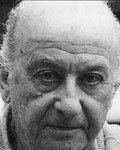Name Peter Moro Role Architect | Died 1998 | |
 | ||
Structures Royal Festival Hall, Nottingham Playhouse, Theatre Royal - Plymouth, Riverside Theatre - Coleraine, New Vic Studio Theatre Similar People Robert Matthew, Hugh Casson, Clement Attlee | ||
Peter Meinhard Moro, CBE (27 May 1911 – 10 October 1998) was a London-based architect whose practice developed many notable public buildings.
Contents

Life and works
Moro was born in Heidelberg, Germany to Professor Ernst Moro, a renowned Austrian physician and pediatrician, and Margareta Hönigswald.
He initially trained in Stuttgart and then at the Berlin-Charlottenburg Technical Academy. Having a Jewish grandmother, he was obliged to move to Zurich for his final two years, studying under Otto Salvisberg.
On graduating in 1936 he moved to London with no money and limited English. He worked for two years with Berthold Lubetkin, "by far the most interesting architect I ever worked with."
In 1938, Moro and Richard Llewelyn-Davies were commissioned to build a house, Harbour Meadow at Birdham, Sussex, one of the least known but most original modern houses of the 1930s, now Grade II listed.
Moro was briefly interned as an "enemy alien" on the Isle of Wight, then from 1941-47 taught at the Regent Street Polytechnic establishing a reputation as someone who knew how to teach architecture in a modern way. Students from his class were drafted into the design team for the Festival Hall. "I chose a handful of the best of my former students whose ideas of design were sympathetic to my own." He was made a RIBA Fellow in 1948.
From 1952 to 1984 he led Peter Moro and Partners, designing Fairlawn Primary School, Lewisham in 1957. His design for his own house at 20, Blackheath Park, a pavilion with a raised living floor, was one of the first post-war buildings to be listed. The practice also designed public housing for the Greater London Council and the London Borough of Southwark.
In 1964, Moro completed his first theatre, The Playhouse, Nottingham. It was one of the earliest theatres to be adaptable either as a proscenium stage or as a thrust stage ("peninsular"), projecting forward. Moro is quoted as saying that "a theatre, however attractive, which does not work backstage, is a nuisance: a theatre which has the correct technology, but no magic, is even worse." He also designed theatres at Hull University, the Theatre Royal, Plymouth (1982) with an adaptable auditorium, and three theatres at the Academy of Performing Arts, Hong Kong (1983–85).
He was awarded a CBE in 1977.
Moro rejected criticisms of modern architecture, but in a way his whole output was a critique of what he called "the banality of functionalism", which, as he repeatedly demonstrated, could be overcome by the imaginative and technically skilful transformation of the ordinary.
Personal
Moro married Hon. Anne Margaret Theodosia Vanneck (20 May 1918 – 2000), daughter of William Vanneck, 5th Baron Huntingfield, on 2 March 1940. They were divorced in 1994.
They had three daughters:
Frances Moro who married John Barnes and had three sons
Alice Moro
Dinah Moro
